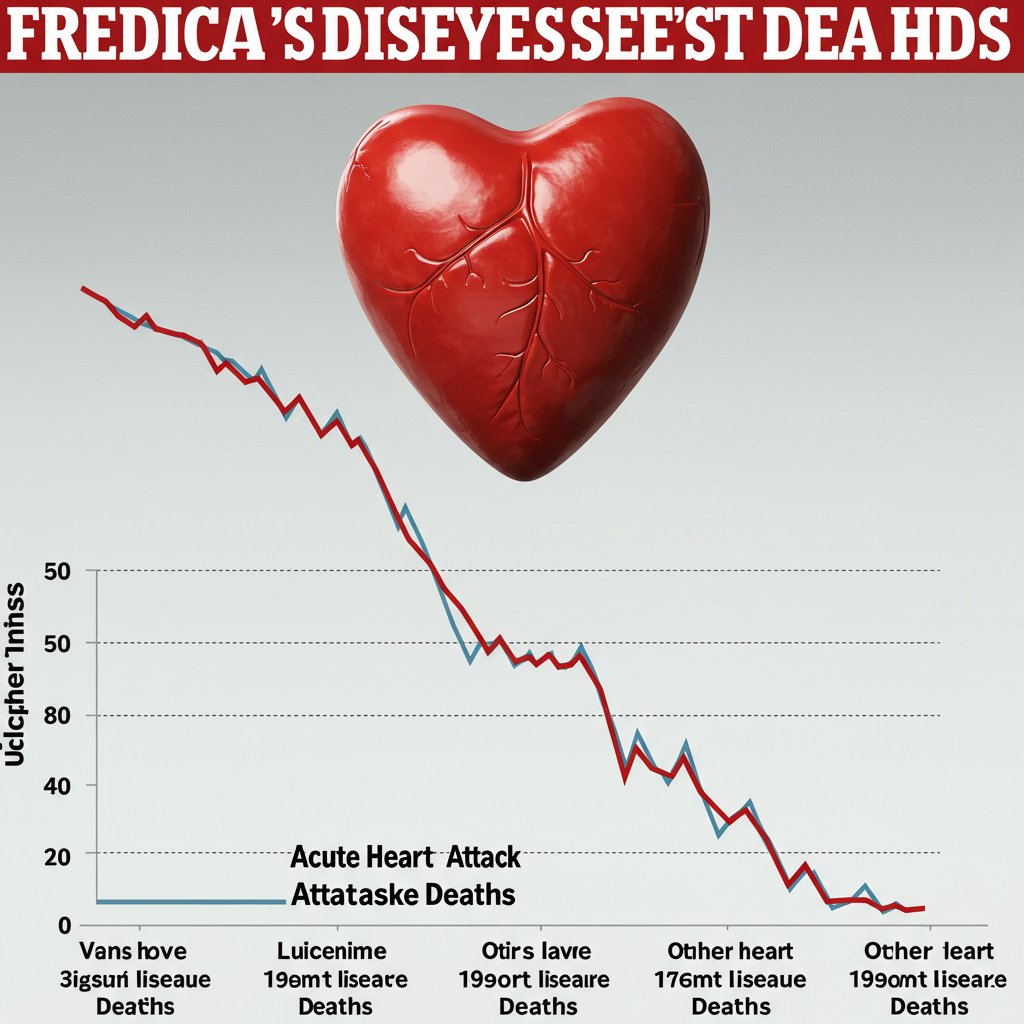While it’s true that deaths from sudden heart attacks have plummeted by a remarkable 89% since 1970, heart disease remains the leading cause of death in the United States. The nature of this deadly threat, however, has fundamentally shifted.
A significant new study from Stanford University reveals that as fewer Americans die from acute heart attacks, deaths from other serious cardiovascular conditions like heart failure, dangerous arrhythmias (irregular heartbeats), and high blood pressure-related heart disease have surged dramatically.
This means heart disease has transformed from a rapid, acute killer (the classic heart attack) into a more complex, chronic collection of conditions that people may live with for years before succumbing.
The Triumph: Why Heart Attack Deaths Fell
The steep decline in heart attack fatalities is a major public health success story, fueled by a combination of medical advancements and lifestyle changes:
Emergency Care: The widespread adoption of CPR by first responders and the establishment of specialized cardiac care units in hospitals revolutionized immediate treatment.
Interventional Cardiology: Techniques like coronary angiography (mapping blockages), balloon angioplasty (opening arteries), and later, coronary stents became routine procedures to quickly restore blood flow to the heart during an attack.
Lifesaving Medications: The introduction of clot-busting drugs, daily aspirin therapy, and powerful cholesterol-lowering medications like statins significantly reduced the risk of heart attacks and improved outcomes.
Rapid Response Protocols: Hospitals implemented “door-to-balloon” times, ensuring patients receive artery-opening treatments within a critical 90-minute window upon arrival.
Public Health Wins: Aggressive public health campaigns led to a significant drop in smoking rates, a major risk factor for heart attacks. Doctors also became more proactive in diagnosing and treating high blood pressure and high cholesterol.
The New Challenge: The Rise of Other Heart Killers
Despite the success against heart attacks, the overall fight against heart disease is far from over. The Stanford study, which analyzed over 37 million U.S. adult heart disease deaths from 1970 to 2022, paints a clear picture of a shifting threat:
In 1970, traditional ischemic heart disease (like heart attacks caused by blocked arteries) accounted for 91% of all heart disease deaths. By 2022, that figure dropped to just 53%.
Meanwhile, deaths from other heart conditions collectively increased by 81%.
Specifically, the study found deaths from heart failure jumped by 146%.
Deaths attributed to high blood pressure-related heart disease rose by 106%.
Deaths from dangerous heart rhythm problems (arrhythmias) saw the most dramatic increase, exploding by a staggering 450%.
Why the Shift? Living Longer, Facing New Risks
Several factors explain this critical shift in heart disease mortality:
- Survival of Acute Events: Modern medicine allows millions to survive heart attacks they would have died from decades ago. While a triumph, surviving a severe heart event often leaves the heart muscle weakened or damaged, making individuals more susceptible to developing chronic conditions like heart failure or arrhythmias years later.
- Increased Lifespan: Americans are living longer overall (life expectancy increased from 70.9 years in 1970 to 77.5 years in 2022). With longer lifespans, there’s simply more time for chronic heart problems to develop and progress.
- Rising Lifestyle Diseases: The increase in deaths from conditions like heart failure and hypertensive heart disease is strongly linked to the soaring rates of obesity, diabetes, and high blood pressure over the past few decades. Obesity rates have nearly tripled, and an estimated 50% of American adults now have diabetes or pre-diabetes. These conditions are major drivers of chronic heart problems.
- Improved Diagnosis: Doctors are better at identifying and diagnosing conditions like specific types of heart failure or pulmonary hypertension today than in the past, which may also contribute to the recorded increase in deaths attributed to these conditions.
The Future of Fighting Heart Disease
The findings underscore that fighting heart disease is a long-term journey that extends far beyond preventing or treating initial heart attacks. The focus must expand to aggressively manage chronic conditions and risk factors throughout a person’s life.
Surviving a heart attack is a victory made possible by incredible medical progress. However, this success highlights the growing need to focus on long-term cardiovascular health, managing conditions like diabetes, high blood pressure, and obesity, and supporting patients who live with weakened hearts to prevent or delay the onset of heart failure, arrhythmias, and other complex heart problems. The battle against heart disease is evolving, and our strategies must evolve with it.




